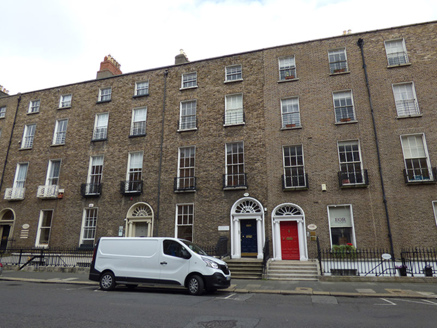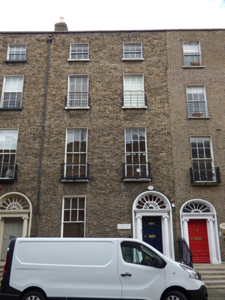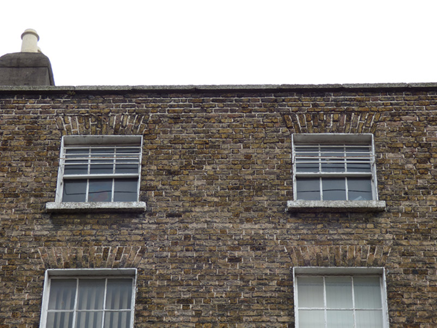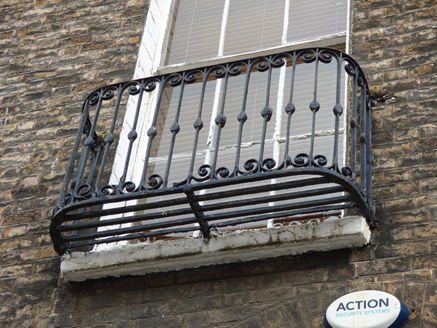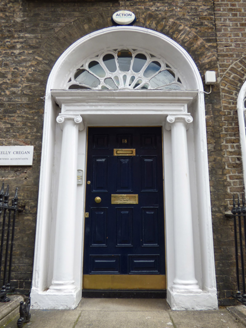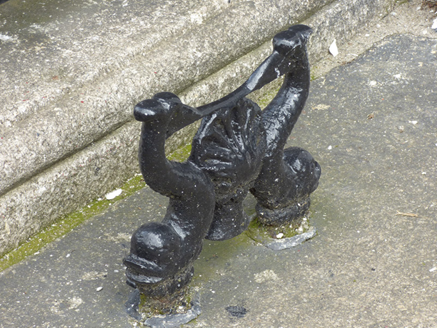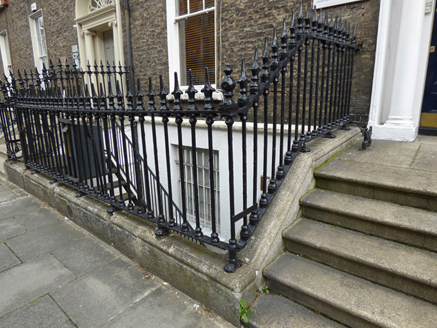Survey Data
Reg No
50100554
Rating
Regional
Categories of Special Interest
Architectural, Artistic
Original Use
House
In Use As
Office
Date
1810 - 1830
Coordinates
316918, 233333
Date Recorded
28/07/2016
Date Updated
--/--/--
Description
Attached two-bay four-storey former house over basement, built c. 1820 as part of terrace of four (Nos. 15-18), having two-storey gabled return to east end of rear. Now in use as offices. M-profile pitched slate roof, behind brick parapet having granite coping and parapet gutters. Shouldered rendered chimneystacks to west party wall with clay pots. Shared replacement uPVC downpipe. Flemish bond brown brick walling on painted granite plinth course over painted rendered basement walling. Square-headed window openings, diminishing in height to upper floors, with painted granite sills and painted rendered reveals. Timber sliding sash windows with profiled horns, six-over-one pane to ground floor, three-over-three pane to top floor, ten-over-ten pane to basement and six-over-six pane elsewhere. Decorative cast-iron balconettes to first floor, wrought-iron window-guards to second floor and wrought-iron grille to basement. Rear has round-headed stairs window to east bay. Round-headed painted masonry doorcase having moulded surround, freestanding Ionic columns, entablature with panelled frieze, decorative peacock's tail fanlight and eleven-panel timber door with brass furniture. Granite entrance platform with cast-iron boot-scrape in form of two swans, and having five bull-nosed granite steps. Decorative cast-iron spearheaded railings on moulded granite plinth enclosing basement area, with cast-iron gate. Replacement door and window beneath entrance platform, accessed via mild-steel steps. Garden and two-storey mews to rear of plot.
Appraisal
A late Georgian row house, built as one in a terrace of four. The front elevation exhibits well-balanced proportions and fenestration grading typical of the period. The restrained façade is enlivened by cast-iron balconettes, intact setting features an ornate boot-scrape, and an Ionic doorcase with a decorative fanlight. It makes a strong contribution to the cohesive character of Mount Street Upper and the wider architectural heritage of south Dublin city. The street was built 1790-1834, the variations in the streetscape are indicative of the piecemeal nature of its construction, the north side being notably less grand than the south. The east end of the street is effectively terminated by St. Stephen's Church, creating an interesting centrepiece and terminating one of the key vistas of Georgian Dublin.
